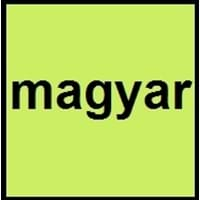Cebuano vs Hungarian
Countries
Philippines
European Union, Hungary, Serbia, Vojvodina, Serbia
National Language
Philippines
Austria, Gambia, Hungary, Romania, Serbia, Slovakia, Slovenia, Ukraine
Second Language
Philippines
United States of America
Speaking Continents
Asia
Africa, Europe
Minority Language
Not spoken in any of the countries
Austria, Croatia, Romania, Slovakia, Slovenia, Ukraine
Regulated By
Visayan Academy of Arts and Letters
known, Research Institute for Linguistics of the Hungarian Academy of Sciences (Magyar Tudományos Akadémia Nyelvtudományi Intézete)
Interesting Facts
- About one-fifth of the population of the philippines speak cebuano and are second largest ethnolinguistic group in the country.
- Cebuano contains many words of Spanish origin.
- Hungarian language has only preserved most of its ancient elements.
- 'Magyar' is the Hungarian name for the language, the 'Magyar' is also used as an English word to refer to Hungarian people.
Similar To
Hiligaynon Language
Mansi and Khanty Languages
Derived From
Island of Cebu
East and South Slavic Languages
Alphabets in
Cebuano-Alphabets.jpg#200
Hungarian-alphabets.jpg#200
Writing Direction
Not Available
Left-To-Right, Horizontal
Thank You
Salamat
köszönöm
How Are You?
Kumusta man ka?
Hogy vagy?
Good Night
Maayong Gabii
Jó Éjszakát
Good Evening
Maayong Gabii
jó Estét
Good Afternoon
Maayong Hapon
Jó Napot Kívánok
Good Morning
Maayong Buntag
jó Reggelt
I Love You
Gihigugma ko ikaw
Szeretlek
Excuse Me
Ekskyus mi
elnézést
Dialect 1
Boholano
Csángó
Where They Speak
Bohol
Bacău County, Rumania
Dialect 2
Southern Kana
Oberwart
Where They Speak
southern Leyte
Austria
Dialect 3
North Kana
Székely
Where They Speak
northern part of Leyte
Székely Land
How Many People Speak?
Not Available
Native Name
Visayan
magyar / magyar nyelv
Alternative Names
Binisaya, Bisayan, Sebuano, Sugbuanon, Sugbuhanon, Visayan
Magyar
French Name
cebuano
hongrois
German Name
Cebuano
Ungarisch
Pronunciation
Not Available
[ˈmɒɟɒr]
Ethnicity
Cebuano people
Hungarians
Origin
16th century
1192 AD
Language Family
Austronesian Family
Uralic Family
Subgroup
Not Available
Finno-Ugric
Branch
Not Available
Ugric
Early Forms
No early forms
Old Hungarian
Standard Forms
Standard Cebuano
Modern Hungarian
Signed Forms
Not Available
Not Available
Scope
Individual
Individual
ISO 639 1
No data Available
hu
ISO 639 6
Not Available
Not Available
Glottocode
cebu1242
hung1274
Linguasphere
No data Available
ohu
Language Type
Living
Living
Language Linguistic Typology
Verb-Subject-Object
Subject-Object-Verb
Language Morphological Typology
Not Available
Agglutinative, Synthetic
Cebuano and Hungarian Language History
Comparison of Cebuano vs Hungarian language history gives us differences between origin of Cebuano and Hungarian language. History of Cebuano language states that this language originated in 16th century whereas history of Hungarian language states that this language originated in 1192 AD. Family of the language also forms a part of history of that language. More on language families of these languages can be found out on Cebuano and Hungarian Language History.
Cebuano and Hungarian Greetings
People around the world use different languages to interact with each other. Even if we cannot communicate fluently in any language, it will always be beneficial to know about some of the common greetings or phrases from that language. This is where Cebuano and Hungarian greetings helps you to understand basic phrases in Cebuano and Hungarian language. Cebuano word for "Hello" is Hoy or Hungarian word for "Thank You" is köszönöm. Find more of such common Cebuano Greetings and Hungarian Greetings. These greetings will help you to be more confident when conversing with natives that speak these languages.
Cebuano vs Hungarian Difficulty
The Cebuano vs Hungarian difficulty level basically depends on the number of Cebuano Alphabets and Hungarian Alphabets. Also the number of vowels and consonants in the language plays an important role in deciding the difficulty level of that language. The important points to be considered when we compare Cebuano and Hungarian are the origin, speaking countries, language family, different greetings, speaking population of these languages. Want to know in Cebuano and Hungarian, which language is harder to learn? Time required to learn Cebuano is 3 weeks while to learn Hungarian time required is 44 weeks.





